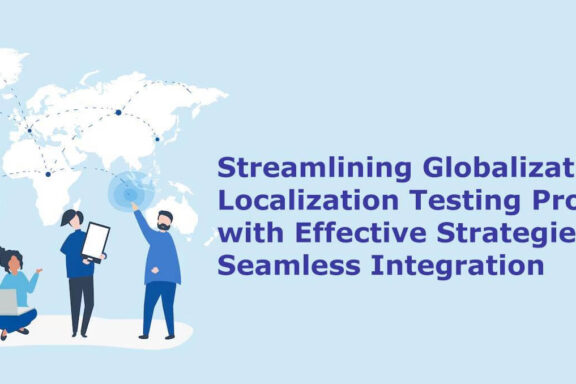In the ever-evolving landscape of education and professional development, virtual learning has emerged as a powerful tool, with webinarach at the forefront of this revolution. webinarach, short for web-based seminars, has become a ubiquitous method for disseminating information, conducting workshops, and fostering collaboration among diverse audiences. This article delves into the profound impact of webinarach on education, training, and knowledge dissemination, exploring the various aspects that contribute to their effectiveness and significance.
I. The Rise of Webinarach in the Digital Age:
In recent years, the digital age has witnessed a paradigm shift in the way information is shared and consumed. Traditional modes of education and training have given way to more dynamic and interactive methods, with Webinarach emerging as a preferred medium. The accessibility of webinarach, facilitated by advancements in technology, has democratized learning, allowing participants from different corners of the globe to engage in real-time discussions, presentations, and skill-building exercises.
II. The Structure and Dynamics of Webinarach:
Webinarach to replicate the interactive nature of traditional seminars but in a virtual space. Typically hosted on online platforms, these events bring together subject matter experts, educators, and learners, fostering a sense of community and collaboration. The structure of a webinar often includes presentations, Q&A sessions, polls, and collaborative activities, creating an immersive learning experience for participants.
III. Advantages of Webinarachin Education and Training:
A. Accessibility and Inclusivity:
One of the primary advantages of webinarach is their ability to transcend geographical barriers. Participants can join from anywhere with an internet connection, making education and training accessible to individuals who may face challenges attending in-person events. This inclusivity promotes a diverse and enriching learning environment.
B. Cost-Effectiveness:
Webinarach eliminates the need for travel and venue expenses associated with traditional seminars. This cost-effectiveness makes virtual learning a viable option for organizations and educational institutions with limited budgets, enabling them to reach a broader audience without compromising the quality of the learning experience.
C. Real-time Interaction and Engagement:
Unlike pre-recorded videos or static online content, webinarach facilitates real-time interaction between presenters and participants. Features such as live chat, polls, and Q&A sessions enhance engagement, allowing learners to actively contribute to discussions and receive immediate feedback. This dynamic interaction contributes to a more impactful and memorable learning experience.
IV. Harnessing Technology for Effective Webinarach:
A. User-Friendly Platforms:
The success of webinarach relies heavily on the usability and features of the hosting platform. User-friendly interfaces, intuitive controls, and robust technical support contribute to a seamless experience for both presenters and participants. Choosing the right platform tailored to the specific needs of the webinar is crucial for maximizing its effectiveness.
B. Multimedia Integration:
Webinarach leverages various multimedia elements to enhance engagement and comprehension. Incorporating slideshows, videos, and interactive tools keeps participants visually stimulated and aids in conveying complex information effectively. The integration of multimedia elements also caters to different learning styles, ensuring a more comprehensive understanding of the subject matter.
C. Recordings and On-Demand Access:
Recognizing the diverse schedules of participants, many Webinarach offer the option to record sessions for later viewing. This feature provides flexibility and accommodates learners who may not be able to attend the live event. On-demand access extends the lifespan of the webinar, allowing individuals to revisit the content at their own pace.
V. Webinarachin Professional Development:
A. Continuous Learning and Skill Enhancement:
Webinarach plays a pivotal role in professional development by offering a platform for continuous learning and skill enhancement. Professionals across industries can stay abreast of industry trends, advancements, and best practices without disrupting their work schedules. This adaptability ensures that individuals can acquire new skills and knowledge relevant to their careers.
B. Networking and Community Building:
Beyond knowledge transfer, Webinarach contributes to the formation of professional communities. Participants have the opportunity to connect with like-minded individuals, industry experts, and potential collaborators. Networking during Webinarach can lead to valuable relationships, mentorship opportunities, and the exchange of ideas, fostering a sense of community within a specific field or industry.
VI. Challenges and Considerations in Webinar Implementation:
A. Technical Hurdles:
While technology has facilitated the widespread adoption of webinarach, technical challenges can still arise. Issues such as poor internet connectivity, software compatibility, or user unfamiliarity with the platform may hinder the seamless execution of virtual events. Providing technical support and clear instructions beforehand can mitigate these challenges.
B. Maintaining Participant Engagement:
Sustaining participant engagement throughout a webinar requires deliberate efforts from presenters. The absence of face-to-face interaction can lead to distractions or disengagement. Implementing interactive elements, encouraging participation through polls and discussions, and incorporating case studies or practical demonstrations can help maintain a lively and engaging atmosphere.
VII. Future Trends and Innovations in Webinarach:
As technology continues to evolve, so too will the landscape of virtual learning and webinarach. Innovations such as virtual reality (VR) integration, artificial intelligence (AI)-driven personalization, and enhanced interactivity are poised to shape the future of webinarach. These advancements hold the potential to further elevate the immersive and collaborative nature of virtual learning experiences.
VIII. Conclusion:
In conclusion, webinarach represents a transformative force in education, training, and professional development. Their accessibility, cost-effectiveness, and interactive nature make them a valuable tool for individuals and organizations seeking to unlock the power of virtual learning. By harnessing technology, addressing challenges, and embracing innovations, the impact of Webinarach on knowledge dissemination and skill enhancement is likely to continue evolving, shaping the future of education and training in the digital age.






